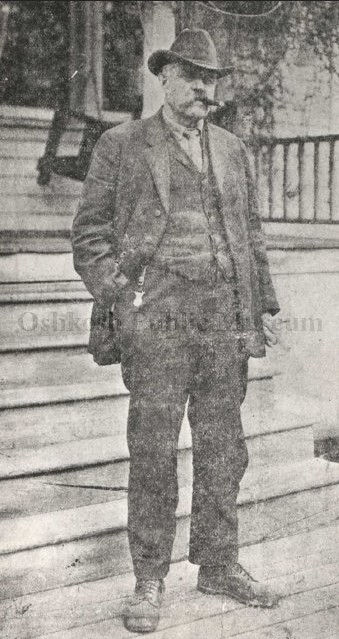The History Channel recently aired a documentary about Custer’s Last Stand and a likely survivor of the massacre, named Fred Finkel. An article about Finkel has a lot of the same details, but the author is clueless about why a young man would join the Army. His conclusion was that Finkel couldn’t make it in the civilian world and joined the Army as a last resort. I guess modern day journalists just don’t understand that White men used to join the Army to go out looking for adventure.

Frank Finkel
The article notes “In the years between 1876 and the later 1920s, 70 grizzled galoots and geezers told amused journalists and historians that they were the lone survivors of the Battle of the Little Bighorn….”
“One man’s story was completely different—because he was telling the truth. But before this article, the last few points of confirmation that clinch Frank Finkel as a survivor of Custer’s Last Stand were hidden in the National Archives, the U.S. Census Bureau and the records of the Columbia County Auditor’s Office in Dayton, Wash. After the discovery of the final pieces of the puzzle, with information from published books, it is clear that Frank Finkel was what he claimed to be—the only known white survivor of the five companies that followed Lt. Col. George Armstrong Custer to the banks of the Little Bighorn River in Montana Territory on June 25, 1876.”
Finkel was wounded when his company charged (on horseback) a group of Indians. There were more Indians than they expected, leading to many of the troopers being killed or wounded. A shot hit Finkel’s carbine sending a splinter of steel into his forehead that caused blood to run into his eyes. Another shot wounded his horse causing it to run uncontrollably. Finkel was wounded in the leg and the abdomen as his horse ran through the Indian lines and off the battlefield. The Indians may have thought Finkel was fatally wounded due to the blood all over his face and the shot to his abdomen and not bothered chasing him.
Finkel claims to have passed out on his horse. He might also have decided he had been wounded enough times for one day. He had no way of knowing if the Indians had wiped out all the troopers in the regiment. He may have been fearful of being accused of running from a battle, which could lead to desertion charges which could result in a hanging so he decided to keep traveling northeast.
He crossed two branches of a river that were poisoned with alkali (which a topographer confirmed later). He had to abandon his dying horse about five days later, and Army records show that a horse skeleton was found about 70 miles northeast from the battlefield with a US Army saddle and gear. He eventually made it to a cabin, where trappers took care of his wounds and he recovered enough to return to civilization.
The story doesn’t sound like some boastful, made-up story, but rather a plausible story, which appears to have some key supporting detail.
No comments:
Post a Comment
Please do not abuse the comment facility. We will not allow profanity or abuse of any sort. Thank you for your co-operation!